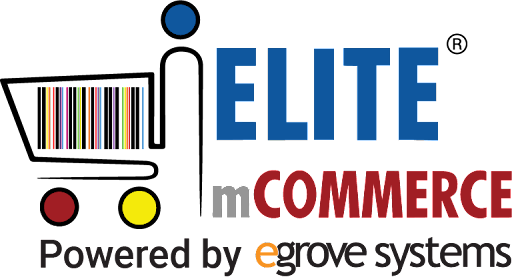As the world becomes increasingly interconnected, the demand for mobile apps that can cater to a global audience is on the rise. One critical feature that can help mobile app developers and businesses unlock new markets and drive international growth is multicurrency support. By integrating a seamless multicurrency solution, you can empower your users to conduct transactions in their preferred local currencies, ultimately enhancing their overall experience and fostering greater engagement with your app.
In this blog post, we’ll explore a comprehensive roadmap for integrating a multicurrency feature into your mobile app, equipping you with the necessary insights and strategies to expand your app’s reach and success in the global marketplace.
Read also: How Payment Gateway Integration Impacts Your Business and Ways to Optimize It
- Assess your target markets and user needs.
The first step in your multicurrency integration journey is to thoroughly understand your target markets and the currency preferences of your users. Conduct market research to identify the key countries or regions you aim to expand into, as well as the most commonly used currencies in those locations. This information will help you prioritize the currencies to support and ensure your app aligns with the needs and expectations of your international user base. - Evaluate the payment gateway and currency conversion options.
Once you’ve identified your target markets, begin researching and evaluating payment gateway providers and currency conversion services that can seamlessly integrate with your mobile app. Look for solutions that offer a wide range of supported currencies, competitive exchange rates, and reliable transaction processing. Additionally, consider factors such as easy integration, customer support, and any associated fees or commissions. - Integrate the multicurrency feature.
With your payment gateway and currency conversion provider selected, it’s time to integrate the multicurrency feature into your mobile app. This process may involve several steps, including:
a. Implementing the payment gateway API: Integrate the payment gateway’s API into your app, ensuring a smooth and secure transaction flow for your users.
b. Developing currency conversion functionality: Incorporate the necessary logic and algorithms to enable real-time currency conversion, allowing users to view prices and make payments in their preferred currencies.
c. Designing a user-friendly interface: Craft a seamless and intuitive user interface that allows users to easily select their preferred currency, view exchange rates, and complete transactions.
d. Testing and optimizing the feature: Thoroughly test the multicurrency functionality to ensure a flawless user experience and make any necessary adjustments based on user feedback and performance metrics.
- Provide transparent and localized pricing.
To ensure a positive user experience, it’s crucial to offer transparent and localized pricing. Display prices in the user’s preferred currency and provide clear information about exchange rates, fees, and any other relevant details. This level of transparency can help build trust and confidence, ultimately leading to higher conversion rates and greater customer satisfaction. - Implement comprehensive reporting and analytics.
Integrating a robust reporting and analytics system is essential for monitoring the performance and impact of your multicurrency feature. Track key metrics such as transaction volumes, currency preferences, conversion rates, and revenue generated from each currency. This data will enable you to make informed decisions, optimize your pricing and currency support, and continuously improve the user experience. - Regularly update and expand currency support.
As global economic conditions and user preferences evolve, it’s important to regularly review and update your app’s currency support. Stay informed about market changes, new currency introductions, and shifting user demands, and be prepared to add or modify the supported currencies as needed. By maintaining a dynamic and up-to-date multicurrency solution, you’ll demonstrate your commitment to providing a seamless and relevant experience for your international users. - Optimize for local regulations and compliance.
When expanding your mobile app’s reach globally, it’s crucial to navigate the complex landscape of local regulations and compliance requirements. Research the legal and financial guidelines in your target markets and ensure your multicurrency integration adheres to relevant laws and regulations. This may involve partnering with local financial institutions, obtaining necessary licenses or certifications, and implementing robust security measures to protect user data and transactions. - Leverage localization and multilingual support.
To truly resonate with your international audience, consider integrating localization and multilingual support alongside your multicurrency feature. Translate your app’s user interface, content, and messaging into the languages spoken by your target markets. This level of localization can significantly enhance the user experience and foster a stronger connection between your app and its global user base. - Continuously monitor and optimize performance.
Regularly monitor the performance of your multicurrency feature and make data-driven adjustments to optimize its effectiveness. Analyze user behavior, transaction patterns, and feedback to identify areas for improvement. This may involve refining currency conversion algorithms, adjusting pricing strategies, or introducing new payment methods to cater to evolving user preferences.
By following this comprehensive roadmap, you’ll be well-equipped to integrate a seamless multicurrency solution into your mobile app, empowering your users with the flexibility to conduct transactions in their preferred local currencies. This, in turn, will enable you to expand your app’s footprint internationally, unlock new revenue streams, and maintain a competitive edge in the global marketplace.
Remember, the successful integration of a multicurrency feature is not a one-time endeavor; it requires an ongoing commitment to monitoring, learning, and adapting to the ever-changing needs of your international user base. With the right strategies and a customer-centric approach, you can turn your mobile app into a truly global platform, poised for long-term success and growth.









Add comment